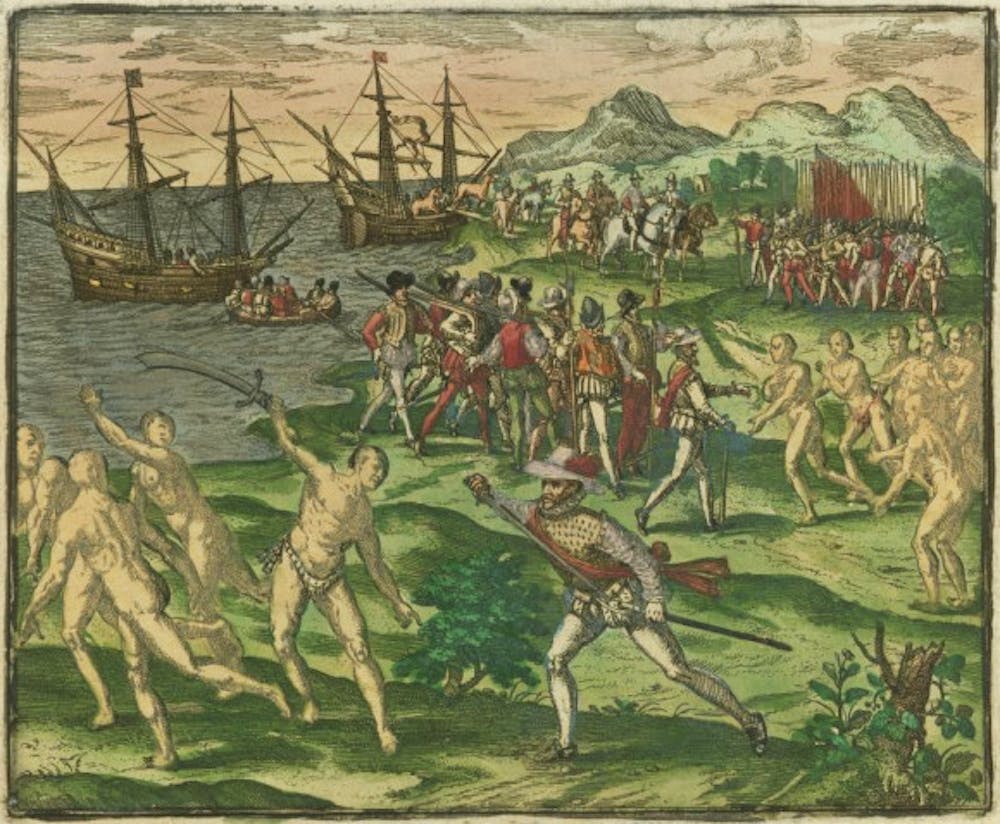Enslavement of Native Americans is often overlooked in historical research, and a new study by Associate Professor of History Linford Fisher shows the problem in colonial New England reaches further than previously assumed. Published in January’s issue of Ethnohistory, Fisher’s research examining native enslavement during and after King Philip’s War reveals that many Native Americans were coerced into surrendering — for fear of punishment or in response to promises of neutrality — but were enslaved regardless.
“Many of those enslaved were not actually combatants but refugees trying to get away from violence,” said Margaret Newell, professor of history at Ohio State University.
“People who wanted to be neutral were assigned a limited term of enslavement, for 10 to 30 years. It’s all right there in the colony records,” Fisher added.
Fisher first began investigating the scope of Native American enslavement when he came across church records while conducting research for a previous book project. Documentation of baptisms revealed that ministers of the church commonly owned two or three Native American slaves, Fisher said.
He said that the transparency of testimonies and government documents took him by surprise. “I was shocked by the lack of embarrassment or sense of moral justice,” Fisher said.
While the extent of Native American slavery appears only to have recently surfaced, this information has been accessible for a long time, Fisher said. “The field has known this for a while, we just haven’t done the hard work of fully understanding it.” The previous assumption was that this slavery occurred on a relatively limited scale.
And yet, evidence now indicates that the estimated number of Native American slaves falls between 2.5 and five million. Considering that the number of African slaves transported across the Atlantic was around 12.5 million, the extent of Native American slavery was comparable in size, said Andres Resendez, professor of history at the University of California at Davis.
Part of the difficulty in quantifying this phenomenon lies in the availability of evidence, Newell said. “People were being enslaved domestically, illegally and informally. It’s hard to reconstruct, compared to countable cargoes of African slaves in the trans-Atlantic slave trade.”
Resendez added that African slaves were concentrated on plantations and widely accepted by governing powers, whereas Native American slaves were traded secretly after the Spanish made slavery illegal. Thus the enslavement of native people was less documented and therefore less well-known today.
Resendez explained that, like the African slave trade, Native American enslavement not only manifested domestically but also through exportation. “The Caribbean was a big magnet for enslaved native labor, so it’s not only English colonies selling natives to the Caribbean, but also Spanish colonists doing exactly the same thing — enslaving people from the Gulf of Mexico coast or the northern coast of South America and selling them to the Caribbean islands,” he said. Fisher described this system as a “reversed Middle Passage.”
Despite the magnitude of Native American enslavement, significant historical research has only surfaced in this area in the past two decades, Fisher said. Outside of the historical community, the impact and prevalence of Native American slavery is even less well-known.
“There might be little snippets of information that come through maybe regionally, but I think it hasn’t made its way into our … national narrative,” Fisher said.
As a result, Fisher is building a public database for the documentation of Native American slavery. “The idea is that there’ll be a crowdsourced database for every indigenous person who’s ever been enslaved in the Americas,” Fisher explained.
“This comes at a time when Americans are trying to take control of their history more and more,” Newell said. “It’s not just the great families and the merchants who dominate the story.”





